![]()
![]()
![]()
Use LEFT and RIGHT arrow keys to navigate between flashcards;
Use UP and DOWN arrow keys to flip the card;
H to show hint;
A reads text to speech;
23 Cards in this Set
- Front
- Back
- 3rd side (hint)
|
Protosome vs Deuterostomes
|
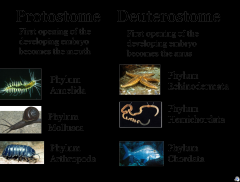
|
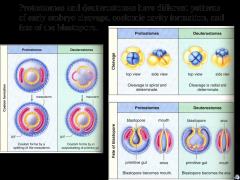
|
|
|
Phylum Echinodermata
|
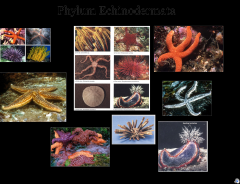
-Sea stars, sea urchins, sand dollars, sea cucumbers
-ossicles: internal skeleton of calcareous plates, spins protrude -Deuterostomes -radially symmetrical -Adults: bodies have a ring of five repetitive parts -Larvae: bilaterally symmetrical -have water vascular system with tube feet +muscle contractions and hydrostatic pressure extend and move tube feet Class Asteroidea Asterias Class Ophiruoidea Class Crinoidea Class Echinoidea Class Holothuroidea |

|
|
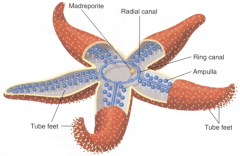
Class Asteroidea
|

*Asterias* (Sea Stars)
-mouth is at the center of the lower, oral surface -anus is on the upper, aboral surface -dermal gills surround the blunt spines and used for respiration by diffusion and pincerlike pedicellariae used to remove debris from the surface. -madreporite is on the aboral surface and connects the water vascular system with the environment |
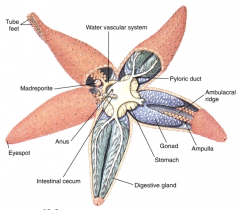
|
|
|
Class Ophiuroidea
|
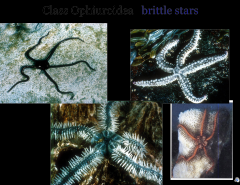
-Brittle Stars (Ophioderma)
-Ossicles are typically thick and have attached muscular -crawl rapidly |
|
|
|
Class Crinoidea
|
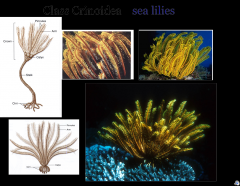
-Sea Lilies and Feather stars
-their oral surface (mouth and anus) usually faces up. -highly branched and feathery arms -filter feed |
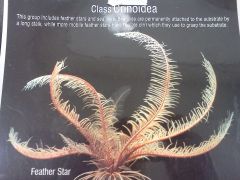
|
|
|
Class Echinoidea
|
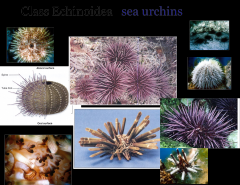
-Sea Urchins and Sand Dollars
-lack arms -ossicles are fused into a solid shell called a test -spines are jointed and movable -spines and tube feet control locomotion -The small internal structure of five teeth is called Aristotle's lantern. - |
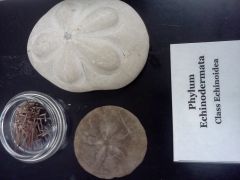
|
|
|
Class Holothuroidea
|
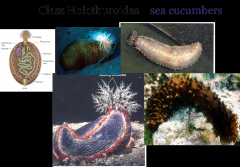
-Sea Cucumbers
-has tentacles -soft bodies with reduced ossicles and few spines -tentacles secrete a mucus that captures small floating organisms -under stress=evisceration |

|
|
|
Phylum Chordata
|
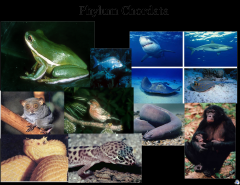
-dorsal hollow nerve cord
-a notochord, a cartilaginous rod that forms on the dorsal side of the gut in the embryo -pharyngeal slits, openings in the throat that filter water that has entered through the mouth -postanal tail -internal bony structure Subphylum Urochordata (tunicates and sea squirts) Subphylum Cephalochordata (lancelets) Subphylum Vertebrata Class Agnatha Petromyzon Class Chondrichthyes Squalus Class Osteichthyes Class Amphibia Class Reptilia Class Aves Class Mammalia |
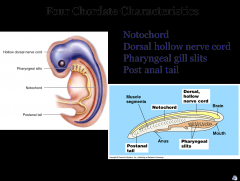
|
|
|
Subphylum Urochordata
|

-Tunicates or sea squirts
-sessile or planktonic -larvae posses the general chordate form -adults are highly modified to include a sievelike basket perforated with pharyngeal gill slits surrounded by a cellulose sac called a tunic. -water: incurrent siphon, pharyngeal basket, excurrent siphon |
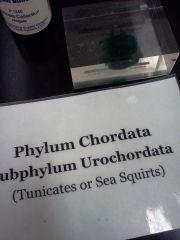
|
|
|
Subphylum Cephalochordata
|

-Lanceletes
-small fishlike, marine chordates that burrow in sand or mud -dorsal nerve cord and notochord extend the length -buccal cavity surrounds the mouth followed by a long pharynx with many gill slits -food particles get caught in the gill slits -anus is not terminal -water passes gill arches, into atrium chamber, leaves through atriopore |
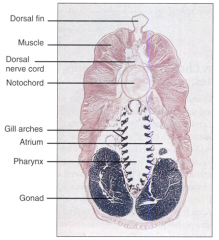
|
|
|
Subphylum Vertebrata
|
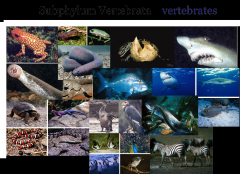
-fish, birds, Amphibians, Reptiles, and Mammals
-vertebral column that replaces the notochord in adults and surrounds the dorsal nerve cord. -have a head Class Agnatha Petromyzon Class Chondrichthyes Squalus Class Osteichthyes Class Amphibia Class Reptilia Class Aves Class Mammalia |
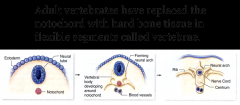
|
|
|
Class Agnatha
|
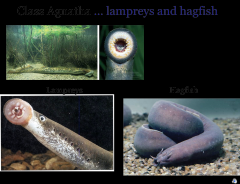
*Petromyzon*
-Lampreys and Hagfishes -ammocoete, the larva of a lamprey -lack jaws but have a cartilaginous endoskeleton and a notochord -have 7 pharyngeal gill slips -The mouth is at the center of the round buccal funnel and is armed with horny teeth and a rasping tongue. -feed on body fluids of fish |
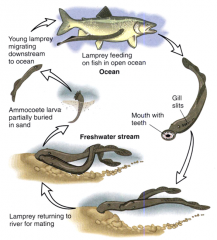
|
|
|
Class Chondrichthyes
|
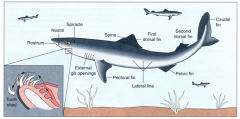
*Squalus*
-Sharks, Skates, and Rays -endoskeleton is cartilaginous and the anterior gill arches are modified into jaws -fins and lateral line |
|
|
|
Class Osteichthyes
|
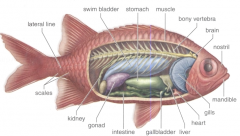
-Bony fish
-a bony endoskeleton, modified gill arches, and internal air bladders for balance and buoyancy -Gills are protected by a movable gill cover called an operculum. -lateral line system |
|
|
|
Class Amphilia
|

-Frogs, Toads, and Salamanders
-terrestrial but lay eggs in water -eggs fertilized externally -aquatic stage called a tadpole |
|
|
|
Class Reptilia
|
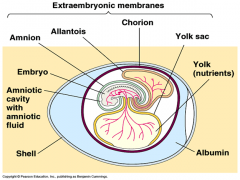
-Turtles, Snakes, and Lizards
-internal fertilization -scales -poikilothermic: body temp depends on enviornment -lay water tight eggs that contain a food source (the yolk) and a series of four membranes: +the chorion: allows oxygen to enter but not water +the amnion: encases developing enbryo within a fluid filled cavity +the yolk sac: provides food for embryo +the allantois: surrounds a cavity into which waste products from the embryo are excreted |
|
|
|
Class Aves
|
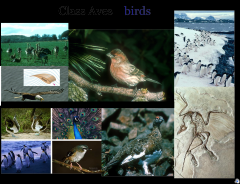
-Birds
-feathers -vision prominent -homeothermic: maintain constant temp -high body temp and metabolism -lightweight skeleton -efficient respiratory system -heavy musculature |
|
|
|
Class Mammalia
|
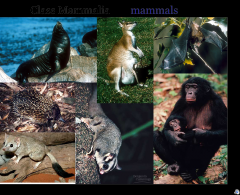
-hair and body fat
-mammary glands |
|
|
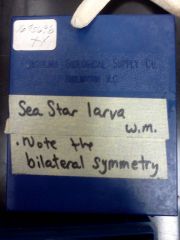
|
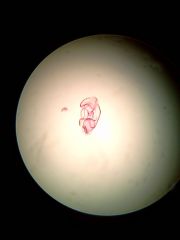
|
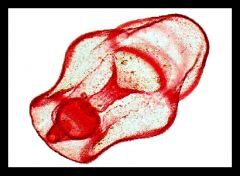
|
|
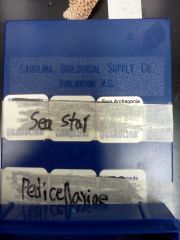
|
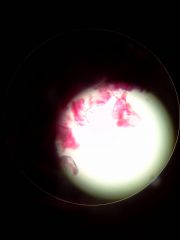
|
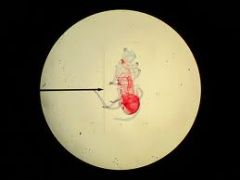
|
|

|
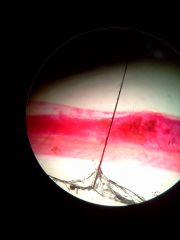
|
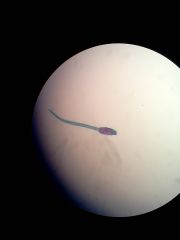
|
|
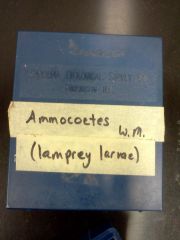
|
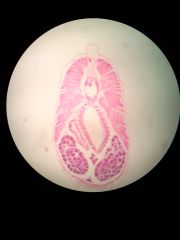
|
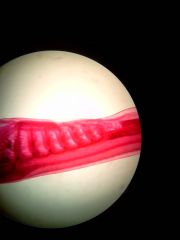
|
|

|
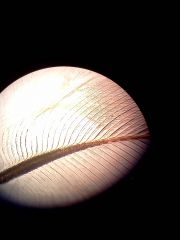
|
|

